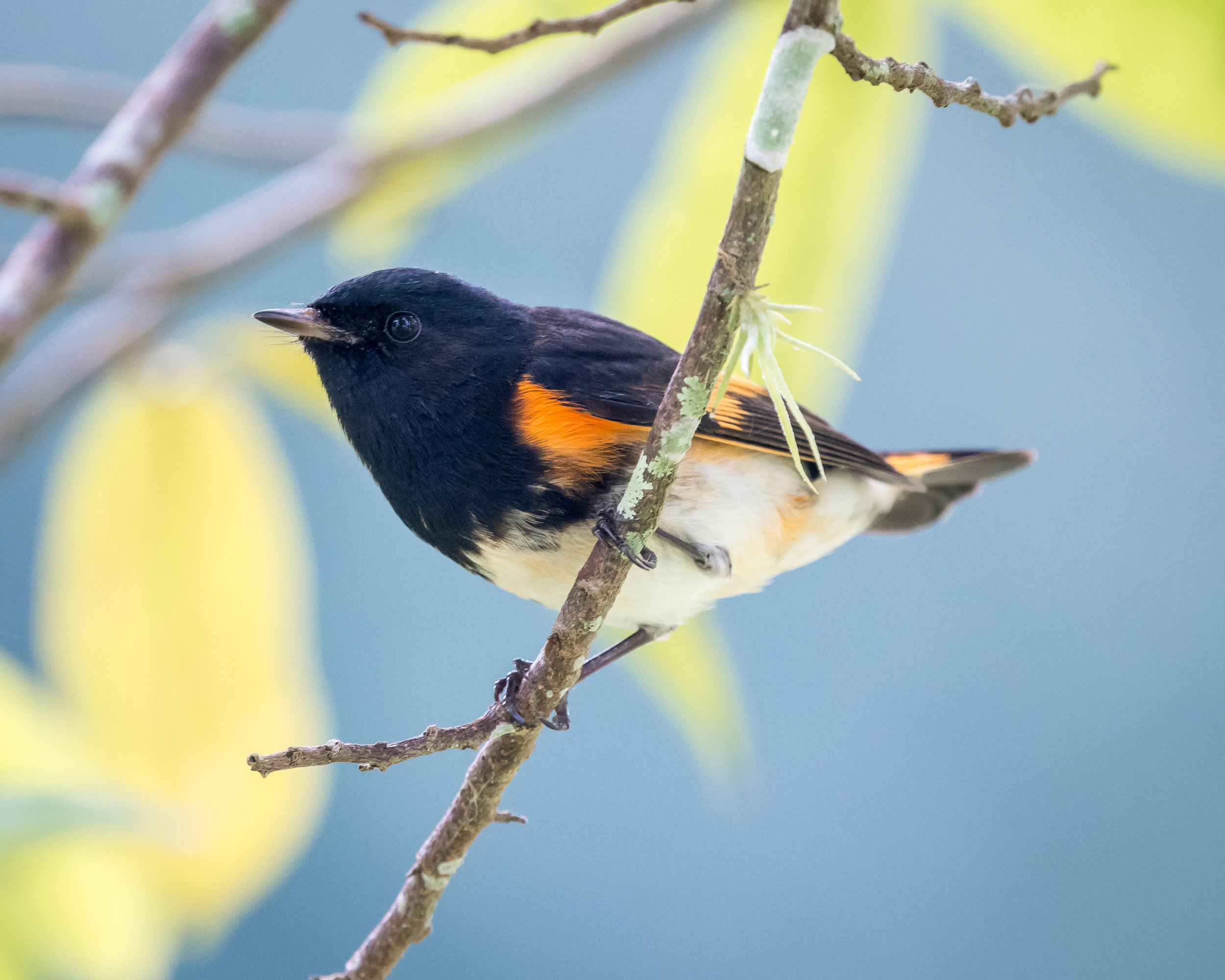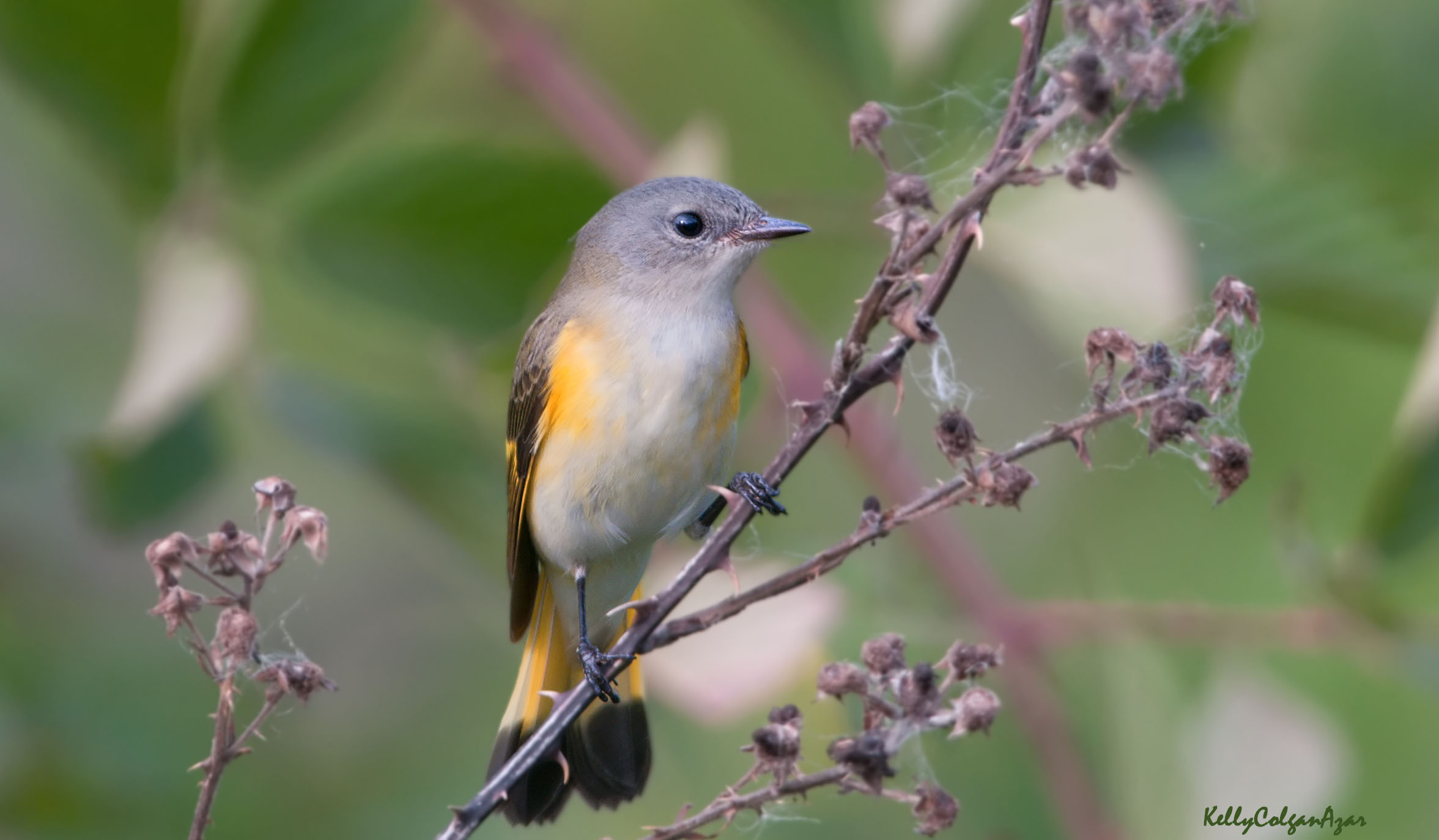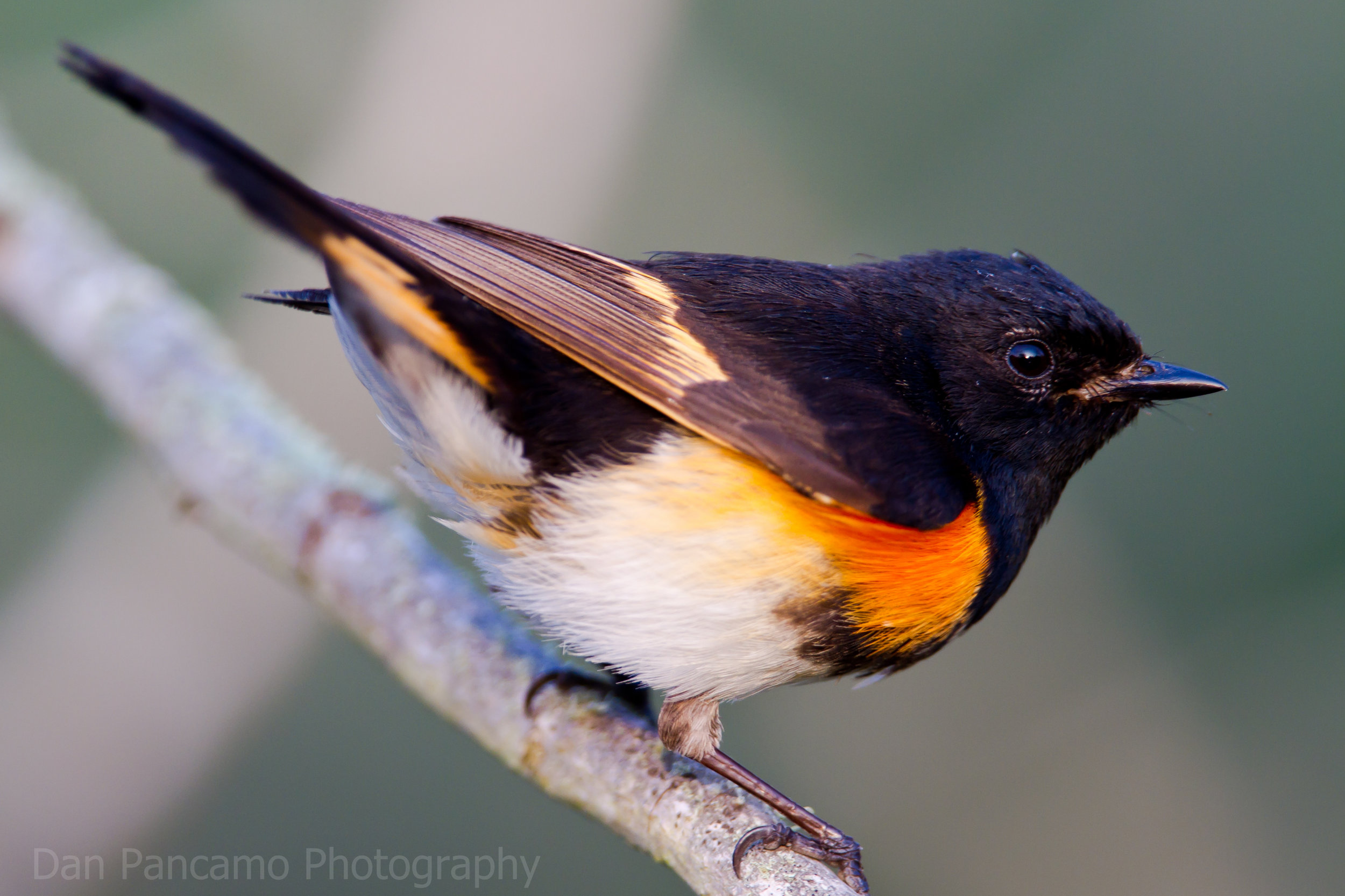Song sparrow with bands. Photo by David Craig
In his essay “Natural History, Forgotten Science” Aldo Leopold lauds the pioneering citizen science work of banding song sparrows. The woman who decided to put these cellulose anklets on the birds, he says, “knew more about sparrow society, sparrow politics, sparrow economics, and sparrow psychology than anyone had ever learned about any bird.”
Today, advancements in technology have allowed us to go beyond the backyard scope, on a Caribbean flight to the wintering grounds of the songbirds of North America. Tiny transmitters attached to the bird measure day length, and give an accurate estimate of where a bird might overwinter. Analysis of stable carbon isotopes in feathers and nails provides insight into not only the location a bird stayed but also the quality of the habitat, and thus the health of the bird.
American redstart, photo by Becky Matsubara
These techniques have been used in studying American redstarts, and Peter Marra and his lab group have conducted the research that has revealed the inner workings of redstart culture.
First, researchers—going off of observations in the field from Jamaica—tested whether males and females were found in different habitats on the island. Indeed, the redstarts were; females and yearling males inhabited the drier scrub on the island, adult males inhabited the wet mangrove forests.
Studies of these habitat types revealed that the mangrove forest was a steady five course meal compared to the scrub. Insect orders preferred by redstarts were much more abundant in the mangroves, and that food source was much more consistent over the wintering months, whereas the scrub saw productive spikes after rainfall but also nadirs during drought.
Mangrove forest, photo by Arlene Koziol
The question to ask was then, was the habitat preference innate to males and females, or was this the result of competition?
On their overwintering grounds in Jamaica, redstarts are quite territorial. To test the competition theory, researchers conducted a removal experiment where territorial males in the mangrove forest were taken out of that habitat. The vacated habitat was filled within days by females and yearling males. It's as if these birds saw their neighbors' mansion evicted, waited a day for good measure, then quickly occupied the space.
This finding had profound implications for how we understand bird populations. Often, density is used as a proxy for quality of habitat. Yet, in these Jamaican habitats, redstarts were densest in the lower quality scrub habitat, and those despots in the mangrove forests were excluding other birds.
Researchers next asked, if these habitats differ in quality, how do they affect the health of redstarts? During the long overwintering period, from October until April or May, females and yearling males lost mass on average, while males (and the small number of females) in the mangroves maintained or increased body mass.
American redstart, first year male, photo by Kelly Colgan Azar
There's another twist in this fascinating tale, however. Yearling males exhibit delayed plumage maturation. Adult males have glossy black feathers with bright orange on the sides while yearling males and females are more olive gray with a duller yellow. It was found that some yearling males were able to occupy the high quality mangrove habitat, but how and why could this be the case? Well, these birds were shown to have more black pigment and larger black patches in their feathers. In essence, they looked more like the adult birds. Were these birds simply quicker at maturing? It turns out, that during territorial disputes, redstarts will peck out the feathers of the sparring partner. In these young males, picking a fight led their feathers to be pulled out, and these feathers were replaced with more adult-like plumage. These birds were literally earning their stripes through territorial disputes!
This is all very interesting, and has immediate consequences for our understanding of these birds and their overwintering habits, but it gets even more interesting as we head back to breeding grounds in North America to see how overwintering condition affects breeding output.
American redstart, photo by Dan Pancamo Photography
First, the males in good condition from the mangroves are the first to leave the island. Females and yearling males leave later into April and May. Since the females have lower food resources over the course of the winter, they are in rather poor condition during migration, and many of the females in poorest condition see decreased success on breeding grounds. All of this increases the likelihood that females will die. The life cycle of the female helps us to understand the population dynamics in this species—the sex ratio in redstarts skews towards a higher ratio of males. Females might be more likely to die at any point during the life cycle, and the lower number of breeding females may limit the general population of redstarts.
Overall, the condition of the later-arriving male and female redstarts was poorer, and both sexes saw decreased reproductive success on breeding grounds. These studies were among the first to delineate carryover effects from non-breeding grounds, an important finding that tropical wintering grounds—once thought of as a relaxing vacation for these birds—could limit populations and produce discernible patterns on breeding grounds. It's an amazing story, with one scientific study built upon another, to understand the ecology of this species.
Many questions remain to be answered. Might rising seas due to climate change reduce habitat on islands like Jamaica for redstarts and other neotropical migrants? Will a disruption of weather patterns cause more drought in the Caribbean and decrease populations of insects and thus populations of birds like redstarts? Furthermore, changing leaf out dates in North America have been proven to affect some species and their reproductive success. Might this be the case with the American redstart? Researchers think that the early arriving (healthy) males also find the best insect availability upon arrival. How might these changes in phenology bear out on breeding grounds? Clearly, the conservation and ecology of the American redstart is a complicated and ever-shifting matter. The next time you see a redstart frenetically jumping through an oak tree, you can speculate as to what habitat this redstart spent its winter, and subsequently the overall health of the bird. If it's a yearling male, you might even be able to tell how many fights he's been in.
Written by Drew Harry, Faville Grove Sanctuary land steward










